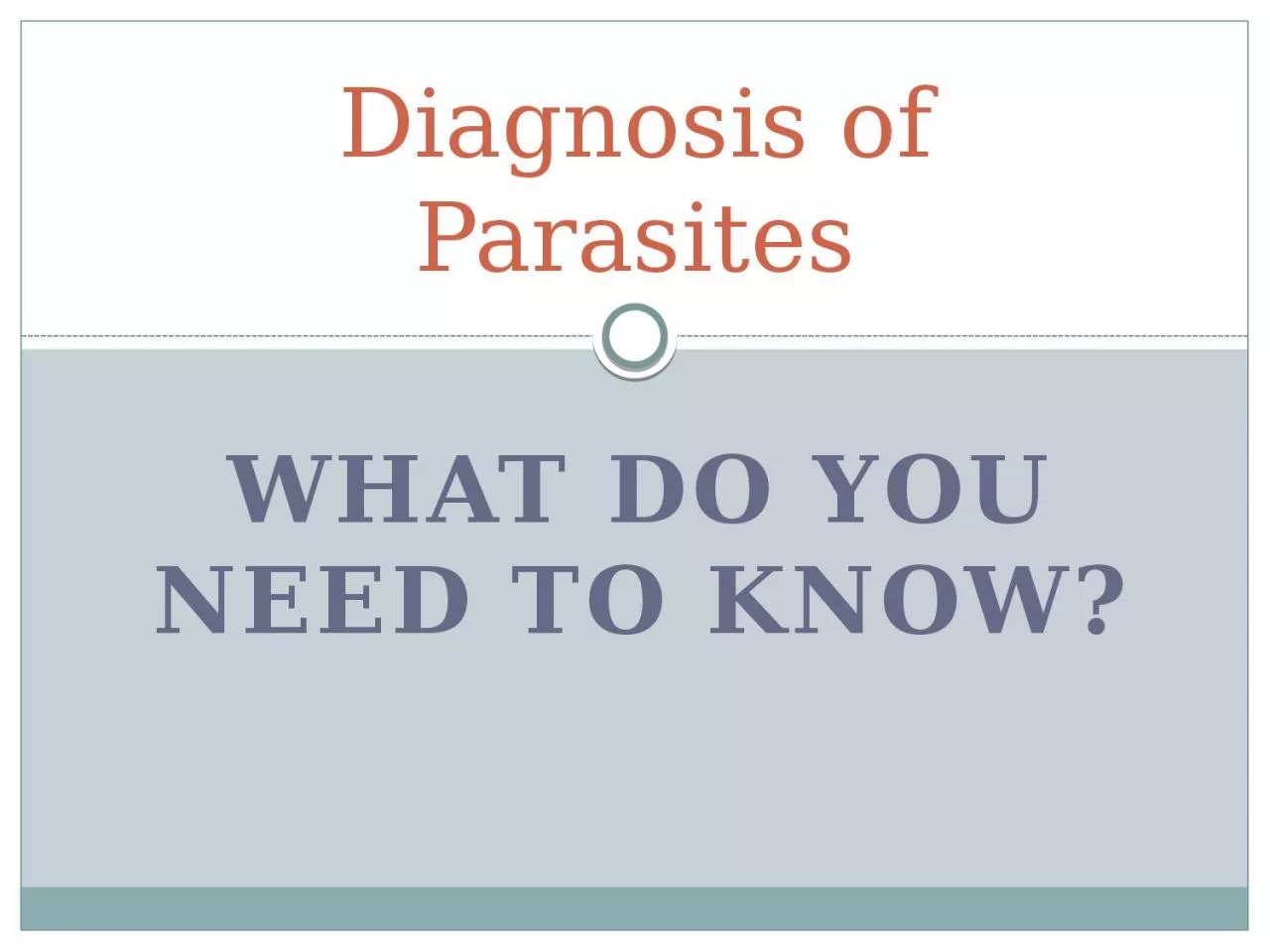

Diagnosis of Parasites What does it look like WHERE WAS IT FOUND WHAT YOU NEED TO KNOW What does it look like Diagnosis by Morphology How big is it and what does it look like Grossly ID: 932976
Download Presentation The PPT/PDF document "What do you need to know?" is the property of its rightful owner. Permission is granted to download and print the materials on this web site for personal, non-commercial use only, and to display it on your personal computer provided you do not modify the materials and that you retain all copyright notices contained in the materials. By downloading content from our website, you accept the terms of this agreement.
Slide1
What do you need to know?
Diagnosis of Parasites
Slide2What does it look like?
WHERE WAS IT FOUND?
WHAT YOU NEED TO KNOW?
Slide3What does it look like?
Slide4Diagnosis by Morphology
How big is it and what does it look like? Grossly
size and shape
Do you need a microscope to see it? High or low power?
size
and shapeDoes it have legs? Six or eight? Is it segmented or smooth? Male, female or both?
Slide5200 um seen at 400 magnifications adult
fluke 1 inch long
Feces of 1 month piglet Liver cow
Bowl full of worms each 6 to 8 inches One worm more than 6 feet long
SIZE
Small intestine feeder pig Small intestine human
Slide6Microfilariae ca 300 um red blood cells lysed Eggs 250 and 65 um, Oocysts 65 um
Blood dog Feces Alpaca flotation
Eggs:
Strongyloides
(larvated)
Trichostrongyle type
Eggs,
Moniezia
(tapeworm) Recently weaned
Goat kid fecal flotationSIZESHAPE
Slide70 legs 6 legs 8 legs
NUMBER OF LEGS
Segmented
Smooth
Slide8Female
Haemonchus
Male
both
both
SEX
Slide9Where was it found?
HOST? From which animal did it come: species, sex, age?
ORGAN or TISSUE? Where was it found: on the skin? where in the body? feces or urine?
ENVIROMENT? Geography? time of year?
wild animal, pasture
, barn or lot?
Slide10Host
Some parasite species are host specific, others environment specific
What other species are in contact with the host
How old is the host and where has it been
Male or female and when or if in the reproductive cycle
Slide11ORGAN
skin (where on body
)
digestive tract (where
)
reproductive tract cardiovascular tract (free or in cells) respiratory tract body cavity
Feces Blood Urine
Slide12ENVIRONMENT
The climate, soil and vegetation determine if a parasite can survive in a specific geographic locality outside the host
Weather conditions determine when they are transmitted
How does the host make a living (diet, protection from weather or predators, who else is in
contact
) Increasing or decreasing chances of exposure